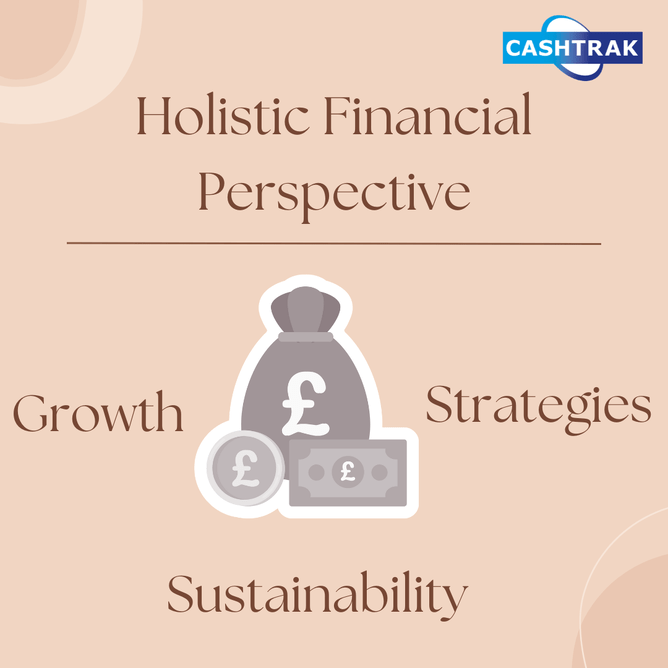Our recent blog looked how using a bookkeeper and an accountant can create a powerful financial team that saves your business time and money whilst ensuring compliance and accurate records. We wrote about a ‘holistic financial perspective’ but what does that mean?
A holistic financial perspective refers to an encompassing and comprehensive view of a business's financial situation, performance, and future prospects. It involves looking beyond isolated financial metrics and considering the interrelationships and broader implications of various financial aspects. For business owners in England, adopting a holistic financial perspective can provide valuable insights and aid in making informed decisions. Here's an explanation of what it entails:
1. Financial Analysis:
Taking a holistic financial perspective involves conducting thorough financial analysis beyond just basic profit and loss statements. It includes assessing key financial ratios, trends in revenue and expenses, and examining the overall financial health of the business. By analysing multiple financial indicators, business owners can gain a deeper understanding of their company's performance and identify areas for improvement.
2. Cash Flow Management:
Holistic financial perspective emphasises the importance of effective cash flow management. It involves monitoring cash inflows and outflows, managing working capital, and optimising cash flow cycles. By taking a holistic approach to cash flow, business owners can ensure the availability of sufficient funds for day-to-day operations, investments, and expansion plans.
3. Financial Planning and Budgeting:
A holistic perspective requires business owners to engage in comprehensive financial planning and budgeting. This involves setting financial goals, creating realistic budgets, and forecasting future financial scenarios. By considering various aspects such as sales projections, expenses, capital requirements, and market conditions, business owners can develop strategic plans that align with their overall growth objectives.
4. Risk Management:
Holistic financial perspective includes assessing and managing financial risks. It involves identifying potential risks, such as economic fluctuations, regulatory changes, or market volatility, and implementing strategies to mitigate them. By considering both internal and external factors that may impact the business's financial stability, business owners can develop risk management strategies to safeguard their financial well-being.
5. Integration of Financial and Non-Financial Factors:
A holistic financial perspective recognises the interconnectedness between financial factors and non-financial aspects of the business. It involves considering the impact of non-financial factors, such as customer satisfaction, employee engagement, operational efficiency, and market positioning, on financial performance. By integrating these factors into financial decision-making, business owners can make more informed and balanced choices that support long-term growth.
6. Long-Term Financial Sustainability:
Rather than focusing solely on short-term financial gains, a holistic financial perspective emphasises long-term financial sustainability. It involves aligning financial strategies with the company's vision, mission, and values. Business owners strive to achieve sustainable growth, profitability, and positive cash flows while considering the social and environmental impact of their business operations.
By adopting a holistic financial perspective, business owners can gain a comprehensive understanding of their financial position, identify opportunities for growth and improvement, and make informed decisions that support the long-term success of their business. It involves considering a wide range of financial factors, integrating non-financial aspects, and taking a forward-thinking approach to financial management.

